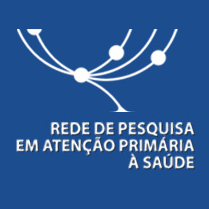No início da pandemia causada pelo SARS-CoV-2 eram reconhecidos como mecanismos de transmissão do vírus: o contato direto ou próximo com uma pessoa infectada (a menos de um ou dois metros), e o contato com superfícies. No entanto, a evidencia científica disponível atualmente indica que a transmissão através de superfícies não é tão importante quanto as gotículas exaladas quando se tosse, espirra, fala, respira, e a inalação de aerossóis respiratórios (Morawska L, Cao J. 2020- Tang S, Mao Y, Jones RM, et al. 2020). Conforme essas novas evidências é necessário adaptar os protocolos de biossegurança já desenhados.
Estudos de laboratório publicados em março de 2020 mostraram que o vírus SARS-CoV-2 pode permanecer em materiais plásticos ou de aço inoxidável durante vários dias. Com base nesses resultados concluiu-se que o SARS-CoV-2 poderia ser transmitido através de superfícies inanimadas. Isso ocasionou que a OMS e as autoridades sanitárias dos diferentes países recomendassem a desinfecção de superfícies que tocamos com frequência e alimentos. No entanto, Goldman, um microbiólogo da Faculdade de Medicina de Rutgers New Jersey em Newark analisou os estudos e concluiu que existia pouca evidência que indicasse que o SARS-CoV-2 poderia ser transmitido para outras pessoas através do contato com superfícies contaminadas. O pesquisador indicou que as condições em que estudos anteriores haviam sido desenvolvidos em laboratório, utilizando cargas virais muito altas, não correspondiam com o que acontecia na vida real. Num comentário enviado à Revista The Lancet em julho de 2020, Goldman apontou que risco de transmissão a través de superfícies inanimadas é pequeno, podendo acontecer somente nos casos em que uma pessoa infectada tosse ou espirra na superfície e outra pessoa toca essa superfície pouco tempo depois (1-2h) (Goldman, 2020), como pode ocorrer em um serviço de saúde. Outros pesquisadores chegaram a conclusões similares, a transmissão através de superfícies inanimadas é possível, mas parece ser uma forma pouco comum de contágio (Lewis D. 2020). Isso também poderia explicar por que numa comparação global, durante os primeiros meses da pandemia, a limpeza e desinfecção de superfícies foi uma das intervenções de menor sucesso para o controle da disseminação do vírus (Haug, N. et al., 2020).
Por outro lado, Tang S, Mao Y, Jones RM, et al. (2020) revisaram a evidência disponível de pesquisas empíricas e de laboratório (até 30 de julho de 2020) e encontraram que vários estudos respaldam que a transmissão por aerossóis do SARS-CoV-2 é plausível. Durante a exalação, a fala ou a tosse são produzidas microgotas respiratórias (aerossóis), nas quais o vírus pode sobreviver durante um tempo relativamente amplo em condições favoráveis. Esses aerossóis podem potencialmente viajar no ar e transportar o vírus dezenas de metros mais longe do que as gotas maiores (que alcançam no máximo dois metros) (Morawska L, Cao J. 2020; Tang S, Mao Y, Jones RM, et al. 2020)
Fonte: Morawska L, Cao J. 2020
Alguns estudos analisaram casos de surtos do vírus SARS-CoV-2 (em um restaurante em Guangzhou (China), em um coro em Mount Vernon EE. UU, entre outros) e concluíram que a alta taxa de infecção somente pode ter sido possível considerando como principal via de contágio a inalação de microgotas contaminadas no ar (aerossóis) (Miller SL, Nazaroff WW, Jimenez JL, et al, 2020; Buonanno G, Morawska L, Stabile L, 2020).
As pesquisas também apontam que o contágio por inalação de aerossóis respiratórios depende das condições do meio ambiente, como ventilação, lotação e tempo de exposição (Miller SL, Nazaroff WW, Jimenez JL, et al, 2020; Buonanno G, Morawska L, Stabile L, 2020; Tang S, Mao Y, Jones RM, et al. 2020; Morawska L, Milton DK. 2020).
Atualmente pesquisadores concordam que a transmissão por inalação de aerossóis respiratórios é muito importante e que o risco de contágio através de superfícies e fômites é baixo. Portanto, pesquisadoras como Lewis D. (2020) têm sugerido que o tempo e recursos investidos na desinfecção excessiva de superfícies e alimentos, podem ser melhor investidos melhorando a ventilação e limpando o ar contaminado.
Conforme essas novas evidências, para diminuir eficazmente a transmissão do SARS-CoV-2 é necessário além das medidas já implementadas (higiene de mãos, uso de máscaras, distanciamento e isolamento social, evitar aglomerações) fazer investimentos para garantir uma adequada e suficiente ventilação dos locais. Os pesquisadores sugerem que para melhorar a ventilação em interiores podem ser implementados mecanismos naturais (aberturas para ventilação, abrir portas e janelas) ou mecânicos (uso de sistemas de filtração do ar exterior, modificação de sistemas de ventilação criando salas de isolamento com pressão negativa, evitar a recirculação de ar em sistemas de ventilação, uso de irradiação germicida ultravioleta em locais onde não é possível evitar a recirculação do ar, limpadores de ar portátil). (Morawska L, Tang JW, Bahnfleth W, et al. 2020).
Fonte: Morawska L, Tang JW, Bahnfleth W, et al. 2020
É preciso que as autoridades nacionais dos diferentes países, Ministério da Saúde e os gestores reconheçam a importância desse mecanismo de transmissão do vírus e implementem intervenções para diminuir o contágio por esta via. A implementação de intervenções para melhorar a ventilação, como as mencionadas, é muito importante em unidades de Atenção Primária, hospitais, escolas, restaurantes, locais de trabalho, supermercados, transporte público e outros locais fechados.
Para a APS, este conhecimento deve orientar estratégias de comunicação e de ação comunitária para promover a redução do risco de contágio e incentivar cotidianamente o uso de máscaras de forma correta, bem ajustadas ao rosto, cobrindo nariz, boca e queixo, para conter o contágio por aerossóis.
O reconhecimento da transmissão respiratória como principal forma de contágio além da necessidade de promover a ventilação dos ambientes, exige intensificar a promoção do uso de máscaras por todos e todas.
Usar uma máscara – qualquer máscara – reduz o risco de infecção com o coronavírus, mas usar uma máscara cirúrgica bem ajustada ou colocar uma máscara de pano em cima de uma máscara cirúrgica pode aumentar muito a proteção para o usuário e os outros, relata estudo dos Centros de Controle de Doenças e Prevenção (CDC) dos EUA. Uma nova pesquisa da agência mostra que a transmissão do vírus pode ser reduzida em até 96,5% se um indivíduo infectado e um indivíduo não infectado usarem máscaras cirúrgicas bem ajustadas ou uma combinação de pano e máscara cirúrgica. Consulte as recomendações do CDC/ US DHHS em https://www.cdc.gov/mmwr/volumes/70/wr/pdfs/mm7007e1-H.pdf
Por: Diana Ruiz, doutoranda que contribui com a Rede APS
Maiores informações podem ser acessadas nos artigos científicos consultados para construir este boletim, disponíveis também na biblioteca do Site da Rede APS:
Buonanno G, Morawska L, Stabile L. Quantitative assessment of the risk of airborne transmission of SARS-CoV-2 infection: perspective and retrospective applications. medRxiv 2020; Disponível em: https://www.sciencedirect.com/science/article/pii/S0160412020320675. Acesso 10 jan 2021.
Goldman, E. Exaggerated risk of transmission of COVID-19 by fomites Lancet Infect. Dis. 20 , 892–893 (2020). Disponível em: https://www.thelancet.com/journals/laninf/article/PIIS1473-3099(20)30561-2/fulltext. Acesso 10 jan 2021
Haug, N. et al. Ranking the effectiveness of worldwide COVID-19 government interventions Nature Human Behav. 4, 1303–1312 (2020). Disponível em: https://www.nature.com/articles/s41562-020-01009-0 Acesso 10 jan 2021
Lewis D. 2021. COVID-19 rarely spreads through surfaces. So why are we still deep cleaning? Nature 590, 26–28 https://doi.org/10.1038/d41586-021-00251-4
Miller SL, Nazaroff WW, Jimenez JL, et al. Transmission of SARS-CoV-2 by inhalation of respiratory aerosol in the Skagit Valley Chorale superspreading event. medRxiv 2020;Disonível em: https://www.medrxiv.org/content/10.1101/2020.06.15.20132027v2 Acesso 12 jan 2021.
Morawska L, Cao J. 2020. Airborne transmission of SARS-CoV-2: The world should face the reality. Environment International 139:105730. https://doi.org/https://doi.org/10.1016/j.envint.2020.105730 Acesso 12 jan 2021
Morawska L, Milton DK. 2020. It Is Time to Address Airborne Transmission of Coronavirus Disease 2019 (COVID-19). Clinical infectious diseases : an official publication of the Infectious Diseases Society of America 71:2311–2313. https://doi.org/10.1093/cid/ciaa939 Acesso 11 jan 2021
Morawska L, Tang JW, Bahnfleth W, et al. 2020. How can airborne transmission of COVID-19 indoors be minimised? Environment International 142:105832. https://doi.org/https://doi.org/10.1016/j.envint.2020.105832 Acesso 11 jan 2021
Tang S, Mao Y, Jones RM, et al. 2020. Aerosol transmission of SARS-CoV-2? Evidence, prevention and control. Environment International 144:. https://doi.org/10.1016/j.envint.2020.106039 Acesso 11 jan 2021
Brooks, Beezhold, Noti, et al. Maximizing Fit for Cloth and Medical Procedure Masks to Improve Performance and Reduce SARS-CoV-2 Transmission and Exposure, 2021. Center for Disease Control and Prevention. 10 fev 2021 https://www.cdc.gov/mmwr/volumes/70/wr/pdfs/mm7007e1-H.pdf Acesso 11 jan 2021






Você precisa fazer login para comentar.